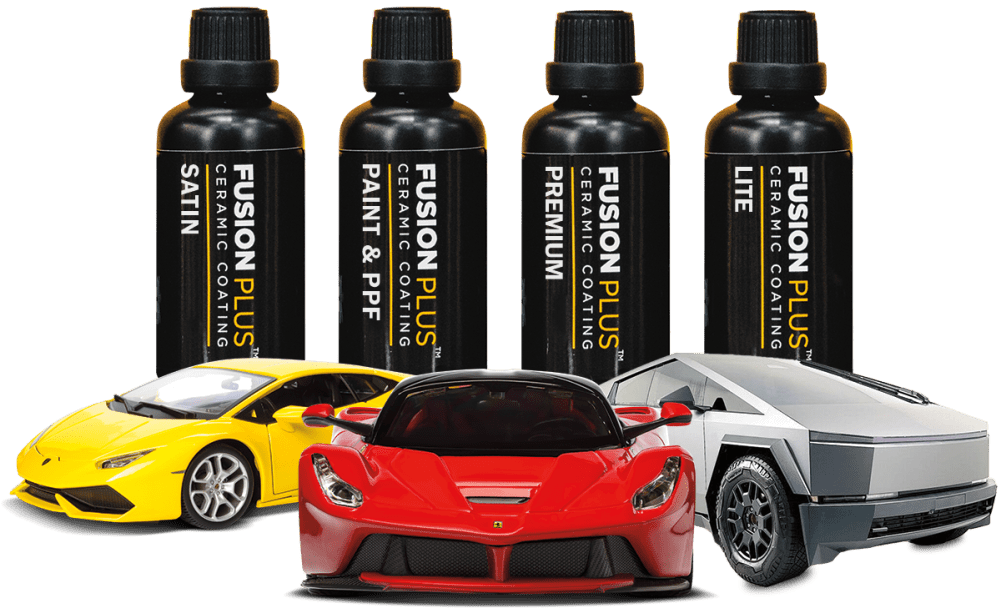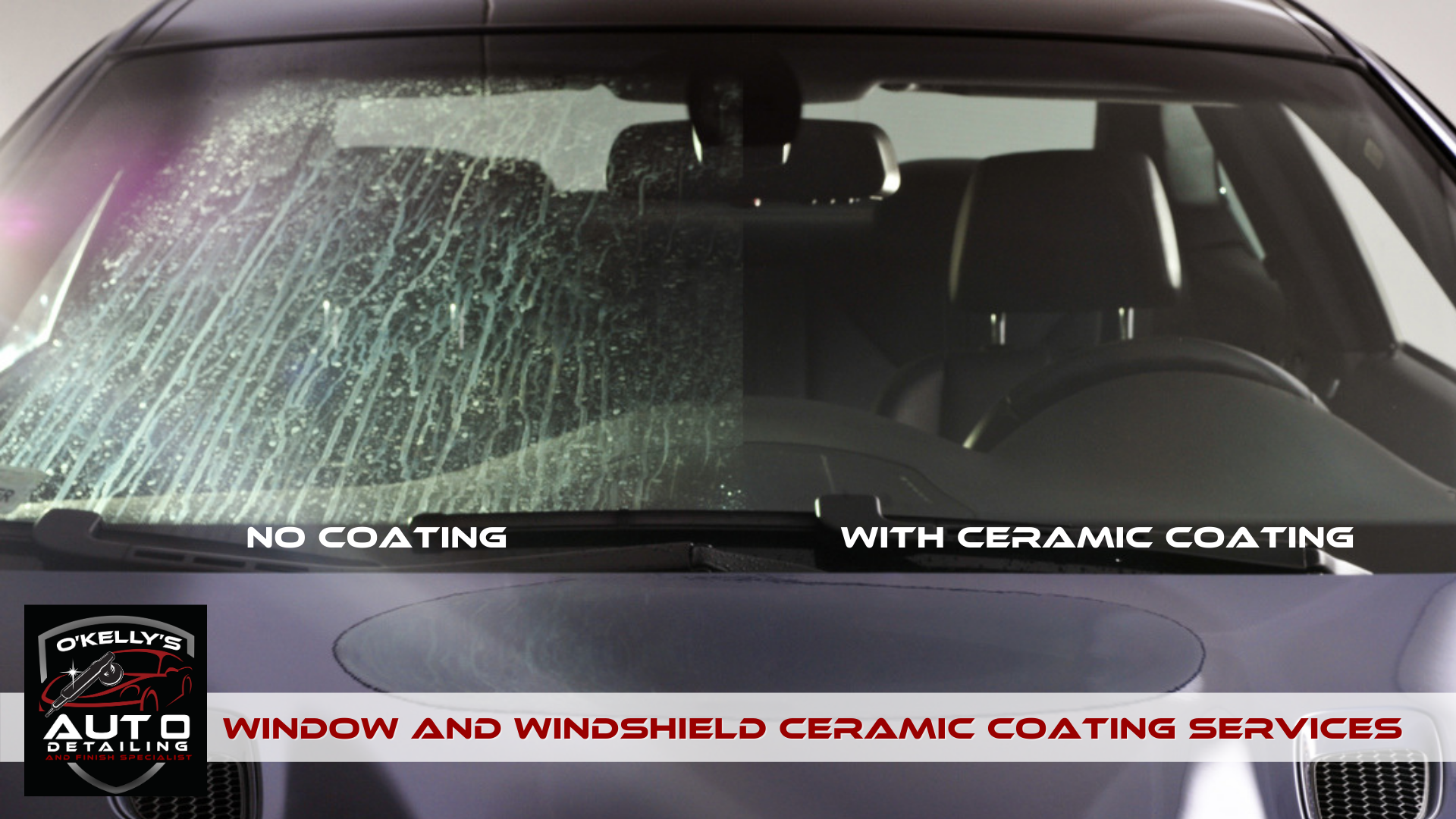The Ultimate Overview to Recognizing Ceramic Coating and Its Advantages
The Ultimate Overview to Recognizing Ceramic Coating and Its Advantages
Blog Article
The Duty of Ceramic Covering in Protecting Your Auto's Paint From Environmental Damage
Ceramic finishing has actually arised as an advanced service for cars and truck proprietors looking for to protect the stability of their vehicle's outside. By developing a robust chemical bond with the paint, this advanced technology supplies a powerful obstacle versus different ecological threats, such as UV rays, acid rain, and contaminants. Understanding the extensive advantages and the intricacies of the application procedure is vital for optimizing its efficiency. As we explore the nuances of ceramic layer, it ends up being obvious that the option to execute this safety procedure might significantly influence your vehicle's long life and visual.
What Is Ceramic Covering?
Ceramic covering is an advanced fluid polymer put on the outside surface areas of a car, designed to provide a sturdy layer of defense for the paint. This cutting-edge remedy creates a chemical bond with the car's factory paint, producing a hydrophobic and durable shield. The finishing contains nanoparticles that fill out the tiny flaws in the paint, causing a smooth surface that improves gloss and shine.
Commonly, ceramic layers are offered in various formulations, enabling different levels of protection and durability. While some products can last for several months, others supply protection for numerous years, depending upon the thickness of the application and ecological variables. The application process needs meticulous preparation, consisting of cleaning, decontaminating, and brightening the lorry's surface to make sure optimum attachment of the finish.

Benefits of Ceramic Coating
One of the key benefits of using a ceramic finishing is the remarkable protection it uses to automotive paint. This sophisticated coating creates a durable layer that guards the car's surface from a variety of ecological threats, including UV rays, acid rain, bird droppings, and tree sap. By supplying this durable defense, ceramic coverings considerably decrease the danger of fading and etching, maintaining the vehicle's visual appeal with time.
Along with security, ceramic finishings are renowned for their hydrophobic residential properties, which fend off water and dirt, making it less complicated to maintain a clean car. This self-cleaning impact lowers the frequency of washing, conserving both time and sources. Ceramic coatings enhance the depth of the paint's gloss, resulting in a dynamic and polished look that elevates the overall look of the automobile.
One more notable benefit is the durability of ceramic finishes. Unlike traditional waxes or sealers that need constant reapplication, ceramic finishes can last several years, offering an affordable remedy for cars and truck proprietors looking for long-lasting security. In general, purchasing ceramic finish results in improved durability, minimized maintenance, and sustained visual appeal for automotive paint.
How Ceramic Covering Works
A ceramic finishing operates through a chemical bonding process that creates a protective layer on the car's paint surface. This innovative solution utilizes advanced nanotechnology, where tiny fragments of silica are put on hold in a liquid type - ceramic coating. Upon application, these particles bond with the manufacturing facility paint, creating a hydrophobic and sturdy layer that improves the car's surface
The major part of ceramic layers, silicon dioxide (SiO2), adds to the finishing's stamina and i loved this resilience. When cured, the covering transforms right into a difficult, glass-like finish that guards the paint from ecological contaminants such as dust, UV rays, bird droppings, and tree sap. This molecular bond causes a surface that is not only immune to scratches however also much easier to clean, as dust and crud are less likely to stick.
Furthermore, the hydrophobic residential properties of ceramic finishes trigger water to bead and slide off, lowering the chances of water areas and mineral down payments. This safety obstacle successfully lengthens the life of the paint and maintains the car's visual charm, using vehicle owners a durable remedy for paint defense.
Application Process of Ceramic Finish
When thinking about the application of ceramic finishing, prep work is key to achieving optimal results. Any type of scratches or flaws need to be addressed at this stage, as the covering will bond with the surface underneath.

Ceramic covering is after that used in little sections, typically making use of an applicator pad. The automobile ought to be left to heal in a regulated environment to permit the finishing to fully bond with the paint.
Long-Term Upkeep and Care
Achieving an effective ceramic layer application establishes the structure for lasting defense, yet correct upkeep is vital to protecting its advantages. Routine cleaning is vital; making use of a pH-neutral cars and truck shampoo will aid keep the covering's stability without causing damage. Avoid automated auto cleans that use unpleasant products, as they can endanger the coating's i loved this surface area.

In addition, using a ceramic layer maintenance spray can enhance the existing layer, supplying an additional boost in protection and luster. It's advisable to do this every three to 6 months, relying on environmental direct exposure.
Finally, car parking in shaded areas or utilizing vehicle covers can prevent extended direct exposure to harmful UV rays and environmental pollutants, even more prolonging the life of your ceramic layer. By sticking to these upkeep practices, you can ensure your vehicle's finish stays secured and visually appealing for many years to find.
Final Thought
In recap, ceramic finish offers as a crucial safety measure for automotive paint, effectively shielding vehicles from a variety of ecological threats. Its capacity to develop a durable hydrophobic obstacle not only enhances aesthetic allure yet additionally dramatically lowers the regularity and strength of maintenance required. The long-lasting nature of this advanced polymer emphasizes its worth in protecting car integrity and look, eventually contributing to a more visually appealing and resilient automobile finish.
Ceramic layer is an advanced fluid polymer applied to the external surface areas of a vehicle, made to supply a resilient layer of protection for the paint. Ceramic layers improve the deepness of the paint's gloss, resulting in a sleek and dynamic look that raises the overall appearance of the vehicle.
A ceramic layer operates via a chemical bonding process that develops a protective layer on the vehicle's paint surface area.The major element of ceramic coatings, silicon dioxide (SiO2), adds to the coating's toughness explanation and resilience.In recap, ceramic covering offers as a vital safety measure for vehicle paint, effectively protecting lorries from a variety of ecological threats.
Report this page